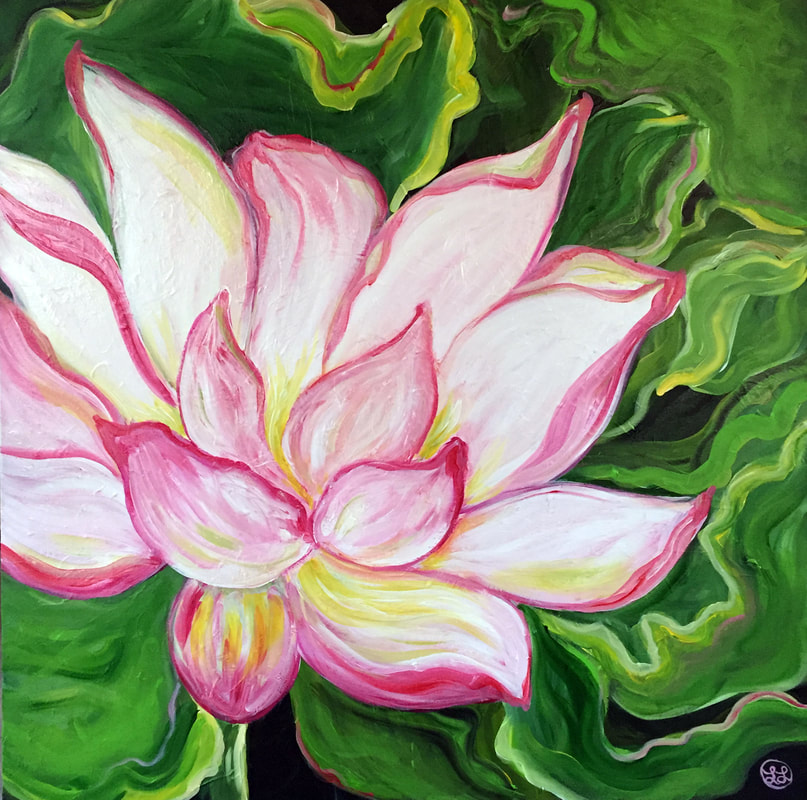The lotus flower and the environment in which it grows illustrates deeper insight into understanding the human condition. With the Four Noble Truths, the Buddha explained that, while inevitable human suffering comes from attachment and craving, happiness can be attained by following a path of renouncing our cravings and attachments. This does not mean ignoring suffering and only focusing on happiness. On the contrary, it requires a concerted acknowledgment that the suffering and happiness are intertwine and, in fact, we cannot fully understand one without the other. Buddhist monk and peace activist Thich Nhat Hanh illustrates how the lotus symbolizes this juxtaposition when he writes “Everyone knows we need to have mud for lotuses to grow. The mud doesn’t smell so good, but the lotus flower smells very good. If you don’t have mud, the lotus won’t manifest. You can’t grow lotus flowers on marble. Without mud, there would be no lotus.” He goes on to explain how confronting suffering head on is critical to this understanding, writing, “The Buddha was saying that if we can recognize suffering, and if we embrace it and look deeply into its roots, then we’ll be able to let go of the habits that feed it and, at the same time, find a way to happiness.”
The juxtaposition of mud and lotus is not unlike the juxtaposition of death and resurrection in the Christian tradition. The empty tomb of Easter can only be understood through the experience of suffering and death on the cross. To fully understand the promise of new life, we must confront the death of our old ways of living and being. Through the liturgy – baptism, proclamation of the word, and the shared meal – the assembly has gathered to meditate upon and respond to this juxtaposition for millennia.
Through the work and prayer at Thomas Chapel, and through the greater project of the Portiuncula Guild, we hope to offer opportunities to explore juxtapositions such as these – mud and lotus, suffering and happiness, death and resurrection – and how they can inform our lives in community with one another. In doing so, we invite artists and seekers, the faithful and doubting alike, to delve deep into the mud of human experience and revel in the beauty of life’s lotus flowers. We are blessed that Lori Leist has shared her spiritual reflections and her gift of art with us to guide us in this journey.
MEB
____________________
No Mud, No Lotus: The Art of Transforming Suffering, Thich Nhat Hahn, 2014.




 RSS Feed
RSS Feed